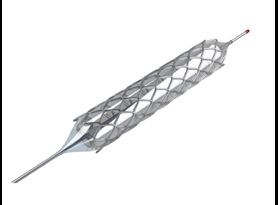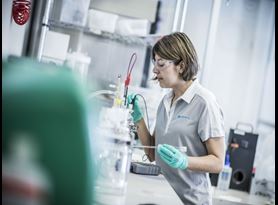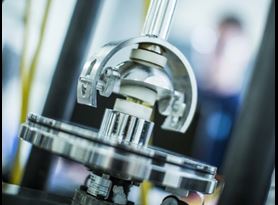Catheters and balloons are devices used during minimally invasive diagnostic or interventional procedures to navigate the vasculature and access target clinical sites. These devices require rigorous testing and validation to ensure that they perform according to their intended use and labeling.
Intravascular catheters have become essential to the practice of modern medicine. While catheter designs continue to evolve and improve health outcomes, testing is also evolving to assess the safety and efficacy of the devices.
Catheter & balloon test methods
There are a variety of methods used to evaluate the properties of catheters and balloons. ISO 10555 outlines general requirements for testing intravascular sterile use catheters. We offer comprehensive testing services for catheters according to FDA guidance document recommendations and ISO standards.
Simulated use testing tracks the delivery catheter device through an in vitro fixture that mimics challenging in vivo physiologic and anatomic conditions (e.g., a tortuous path, aqueous environment), similar to the device’s clinical use. Testing is performed with complete sterilized assemblies with mounted stents and any accessory devices that would be used in a typical clinical procedure such as an introducer or guiding catheter, using worst-case sizes (e.g., smallest guiding catheter ID). Samples are thermally equilibrated in a 37°C saline bath. Reports include any abnormality or difficulty observed during the simulated procedure, and any damage observed on the stent, delivery system, or any of the accessory devices.
Tip pull, flexibility and kink resistance, and torque strength are measured in the simulated use model to determine the mechanical properties of a catheter, balloon or guidewire.
Dimensional verification is performed with accessory devices that would be used in a typical clinical procedure (e.g., introducer or guiding catheter), using worst-case sizes (e.g., smallest guiding catheter inner diameter) per ASTM F2081.
Balloon rated burst pressure testing, including in-stent, per ISO 10555-4 helps manufacturers determine the rated burst pressure (RBP) - the pressure at which 99.9% of balloons can survive with 95% confidence.
Balloon fatigue testing, including in-stent, per ISO 10555-4 measures the repeatability, typically to 20 inflations, of successful balloon inflations to the rated burst pressure. Per recommendations, we test device sizes according to the “four corners” paradigm:
- largest diameter/longest length
- largest diameter/shortest length
- smallest diameter/longest length
- smallest diameter/shortest length
Balloon compliance testing ensures that the diameter of a deployed PTCA balloon varies with inflation pressure. We measure balloon compliance (diameter vs. pressure) and balloon inflation and deflation times to help manufacturers develop compliance charts that guide the selection of catheter size to fit the target vasculature site.
Catheter bond strength evaluates the locations where adhesives, thermal fusion, or other joining methods are used for bonding components of the catheter. Catheters are preconditioned by tracking through a tortuous path fixture.
Catheter body burst pressure measures the maximum pressure that the catheter body can withstand during injection under clinical use conditions, i.e., including use of a syringe, automatic injector, etc. At maximum burst pressure and pressures typical to clinical use, we measure contrast media flow rate.
Additional testing services for balloons and catheters include coating integrity, particulate evaluation and corrosion.
For more information about our catheter testing services, or to request a quote, contact our cardiovascular device testing experts today.
Related Services

Stroboscope Visual Inspection of Medical Devices
Digital stroboscopes facilitate visual inspections of cardiovascular medical devices as they undergo accelerated fatigue. The strobe light is a very useful tool in detecting device failures and tracking motion during testing.

Preconditioning Stents for Fatigue through Simulated Use Testing
Simulated use testing of implantable cardiovascular medical devices is a well-established non-clinical engineering test used to serve many purposes including delivery, deployment and retraction of a stent.

Electrochemical Corrosion Testing
Element performs electrochemical corrosion testing per ASTM F2129 to ensure that medical devices are safe, and provided the intended benefits to the patient.

Tips for Medical Device Testing
Our medical device testing experts provide guidance on how to determine the size and number of samples, in addition to test levels, systems and protocol.

